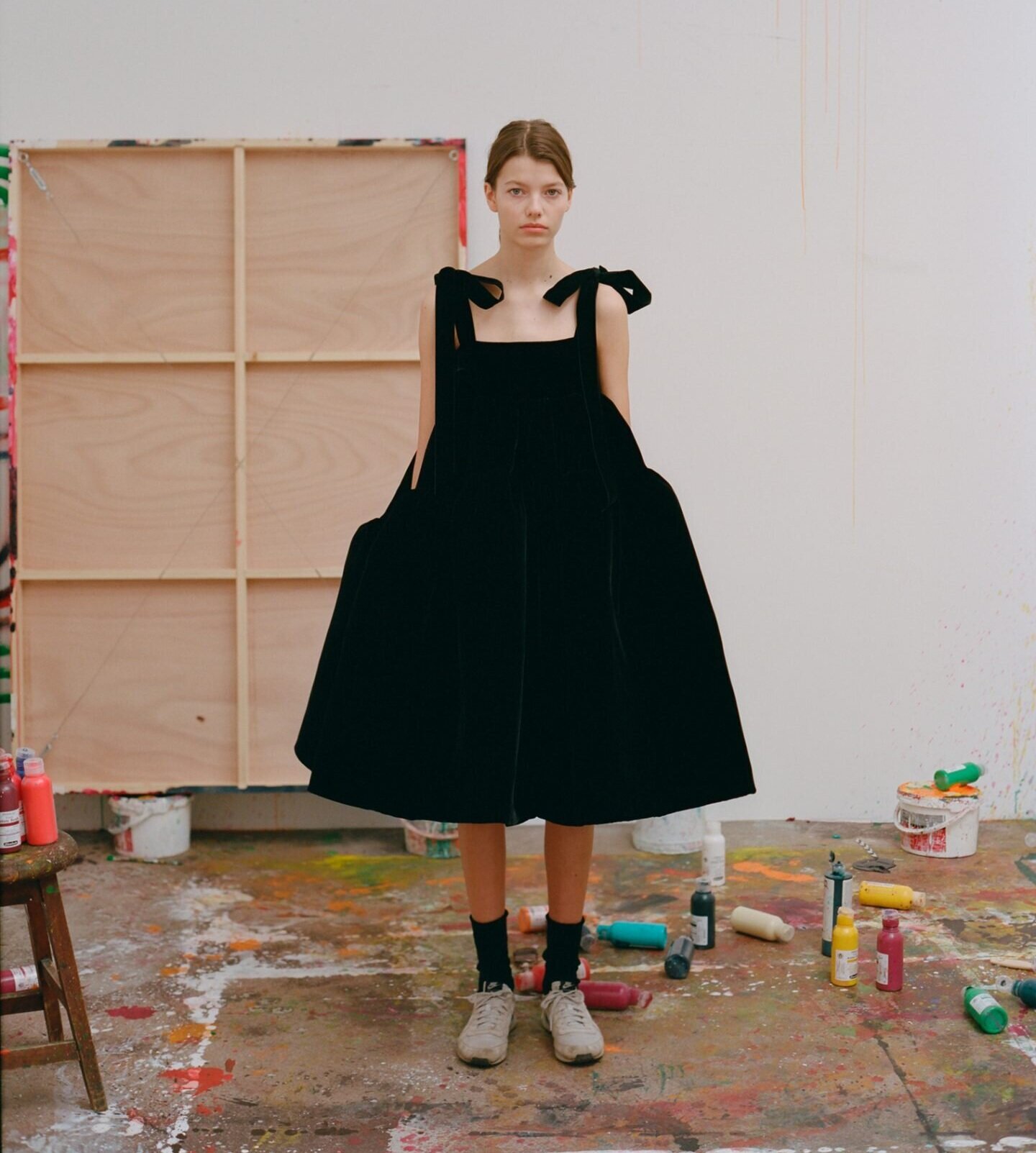As an industry, and as consumers of fashion, we talk a lot about what’s behind a preference for colors and brands. But I noticed another aesthetic preference that tends to divide us: our favorite silhouette.
Although we have primarily considered silhouette when it comes to body types – apparently, there are some rules around being a so-called ‘pear’ or a ‘triangle’ - but from observation, I don’t think physicality rules are what drives our preference for a certain silhouette.
Apparently my fairly normal body type in terms of curves and proportions means I can wear different silhouettes. Yet I don’t. I noticed, for example, that 90% of my dresses are A-line. The bigger and bolder they flare out, the frothier and rufflier they are, the better. The few times I’ve tried wearing a straighter silhouette, it feels wrong with every fiber of my being.
French desginer Roland Mouret tends to favor more conservative form-fitting designs.
The late designer L’Wren Scott, whose collections were defined by a sexy body-skimming silhouette, was the opposite. She has been known to say: “I have always had the silhouette that I know suits me. I am never going to wear a frothy, poufy thing that sticks out because I have found a style that works for me, and I stick with it.” Technically, her model frame looked good in anything, yet she admitted to feeling wrong in anything that deviated from her streamlined looks.
I believe much like with why we are drawn to certain colors and brands, the mood a silhouette exudes, and how that interacts with our psychological profiles, is the key driver.
The late designer L’Wren Scott sternly favored the straight silhouettes which underpinned her collections.
When it comes to assessing personality, we at The Psychology of Fashion look to the Big 5 Model, the most robust measure of personality traits. Of course, silhouettes vary, but for brevity, we’ll talk about the main divisions: straight/pencil/sheath silhouettes v.s. tent/babydoll/flared/A-line shapes, and how they relate to two of the personality traits that I believe are responsible: openness (curious, imaginative) and conscientiousness (careful, diligent).
Straighter silhouettes are more conservative: they speak of tradition, duty, convention and responsibility. People who like straighter silhouettes are lower on openness, and higher on conscientiousness. They follow a schedule, they delay gratification, and they play the game of life by the rules. Designers who primarily opt for this are Victoria Beckham, Galvan, Herve Leger, Roland Mouret.
“People who like straighter silhouettes are lower on openness, and higher on conscientiousness.”
London-based brand Galvan focuses on body-skimming sheaths.
And those who like flared, A-line silhouettes tend to be more creative, open-minded, liberal youthful and free-spirited in regard to how they view the world. People who like more flared, A-line silhouettes are higher on the personality trait of openness, and lower on conscientiousness. They make their own rules, often stay out too late, and have less conventional opinions.
Of course, silhouettes, are not confined to these two types. There are sheaths that romantically flare out at the bottom into ruffles, as we see with designers such as Johanna Ortiz, and oversized tent dresses like we see at Cecilie Bahnsen. The appeal of these non-traditional silhouettes speaks of more extreme moods and nuanced personalities. Bahnsen’s exaggerated silhouette draws an even more open-minded wearer than the average A-line, which is why her pieces are loved by creatives and the fashion crowd.
Fashion-forward Scandi label Cecilie Bahnsen has a cult following thanks to its billowy oversized silhouettes.
Some labels also temper one quality through another element, for example, a pencil skirt in leather is less conventional than one in tweed. Personal styling also comes into play, such as the shoes worn with said silhouette can pull into one direction or another, which will all warrant further analysis.
Granted, enclothed cognition, the notion that clothes affect your thoughts, mindset, mood, and ultimately behaviour, also comes into play. The few times an A-line feels wrong for me, are usually at business meetings. On imagining having to speak with investors, I want to tap into my inner responsible, rational side. Enclothed cognition is important because it sparks a new state of being in you. In feeling more like a real entrepreneur in my straight silhouette dress, I have the right mindset for the meeting, and I am able to talk about revenue and ROI with a lot more conviction than when I’m wearing a dress previously worn for drinks at Hotel Costes.
Which is your go-to silhouette? Tell us in the comments.

















In the world of post-pandemic dressing, one word has taken social media by storm: cheugy (pronounced: chew-gee). In the worlds of fashion and lifestyle, cheugy describes a look, a thing or a person that’s considered out of date.